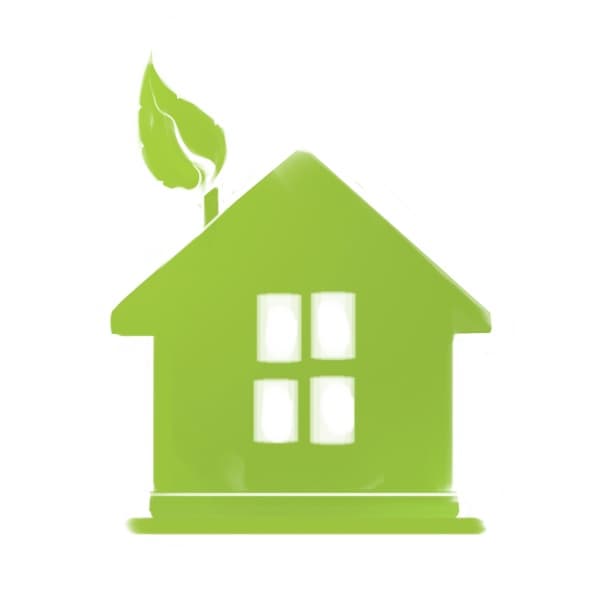
Read our Safe Sofa Guide for a list of our favorite toxin-free sofas.
Even if you live in an urban location, the air inside your home is likely more polluted than the air on the city streets outside. If you’re a reader of this blog, you probably know that indoor air contamination comes from places like the paint on your walls, carpeting on your floors, and flame retardant treatments in the foam cushions of your upholstered furniture.
It’s true that these are all important sources of volatile organic compounds (VOCs), which are airborne chemicals implicated in a range of ill health effects. And while ideally we would all replace our sofas, tear out any carpeting in our homes, and repaint all our walls with milk paints, but this kind of overhaul isn’t realistic for most of us.
The good news is that there are three steps you can take right now—none of them overly costly or complicated–that will greatly improve the safety of your home.
Clean up your cleaning supplies (and choose the right vacuum cleaner).
A major source of indoor air pollution is, ironically, the stuff we use to keep our homes feeling fresh and clean. From glass cleaners to laundry detergent, most cleaning supplies contain ingredients that are caustic to our respiratory tracts and disrupting to our endocrine systems.
It’s hard to know which “natural” cleaning products are truly non-toxic and which are just Sneaky Stuff, and unfortunately you often have to look product-by-product even within one brand. Mama Suds, Eco-Me, and Better Life, and Sonett are four brands that I trust across the board.
Flame retardants and other toxins build up in dust, so the more you vacuum, the more toxins you’ll clear from your home. But choosing the right vacuum is important: you’ll want a HEPA-sealed model, which ensures that dust and toxins stay sealed inside the filter. Furthermore, many vacuum cleaners are actually treated with flame retardant chemicals themselves, so look for one that’s RoHS-certified. Miele is one brand that fits the bill.
And by the way, sweeping isn’t such a great way to rid your home of toxins—instead, it sends dust into the air where it can be inhaled. Vacuuming or wet mopping are more effective ways of cleaning dirt and toxins.
Nontoxic Housekeeping from ecomaids of New York
If you live in New York and use a cleaning service, I can’t say enough things about ecomaids. Not only are they the most professional and thorough house cleaners I have ever experienced, but they bring all of their own 100% nontoxic cleaning products (I checked all the labels, believe me!). Even if your budget doesn’t allow for regular cleanings, you might consider treating yourself to ecomaids deep cleaning services once a season.
Purify your air.
There are a variety of ways to clear your air of any emissions coming from your existing furniture, paints, flooring, and so forth. Depending on how extensively you want to clean the air, your options range from very affordable to fairly expensive.
Here are some ideas:
- Open the windows more to let in cleaner air.
- Put out some charcoal air purifiers, which help with everything from odors to VOCs.
- Fill your home with houseplants, which absorb airborne toxins while also producing clean oxygen.
- Cover your floors with 100% wool rugs (wool naturally absorbs VOCs).
- When it’s time to paint your walls, look into ECOS Pure paints and primers, which absorb a variety of VOCs, including formaldehyde.
- If your budget allows, go for a top-of-the-line electronic air filter, which will remove everything from dust and pollens to VOCs. (I recently invested in the Austin Air Bedroom Machine myself, and have noticed an immediate difference in my own home.)
Related Post: How to Choose the Best Air Purifiers and Air Filters
Filter your drinking water.
Even in places like New York City, where our water is known to be “really safe,” chlorine and controversial fluoride are added. Pitcher-style or refrigerator filters help a little, but mostly clean up the appearance and taste of water, rather than doing much to make it healthier. A more robust carbon-block water filtration system will deal with chlorine, chloramines, heavy metals, hydrogen sulfide, VOCs, pharmaceutical products, and a range of other chemicals you haven’t heard of, but definitely don’t want to be drinking. We use this three-stage filter in our home
Extra credit: Be smart when replacing furnishings.
When you are shopping for new furniture, be sure to seek out low-toxin or toxin-free pieces.
Most importantly, be sure to choose a mattress and sofa that are not treated with flame retardant chemicals.
As for desks, tables, beds, and bookcases: most “wooden” pieces are actually made of something called “composite wood,” which is bits of wood glued together to mimic a solid piece. Unfortunately, processed wood contains noxious glues that emit VOCs, include formaldehyde, a known carcinogen.
Composite wood may be called pressed wood, compressed wood, plywood, particle board, or medium density fiberboard (MDF). Look for furniture that’s 100% solid wood (but be prepared to pay more for it!). Our line of Clean Sleep bed frames are constructed of solid wood and finished with only linseed oil and beeswax.
What else do you worry about when it comes to toxins in your home? Ask your questions below!
Stay sane,

If you liked this post, sign up for our newsletter to be alerted when we publish new content like this!











Niall says
Insightful article, Maia. It’s so important to live consciously and choose more natural items for our homes. At AspenClean, we manufacture a range of all-natural, eco-friendly cleaning products rated Straight A’s by the EWG. We have full ingredient disclosure and are Ecocert and Leaping Bunny certified.
Maia James says
Thanks for letting me know! I’ll be sure to check out your products:)
Theresa says
I have used Lullaby paints when I was pregnant and wanted to paint my sons room. Have you heard of this company? When doing my research they seem to be safe and let out minimal to no toxins.
Maia James says
Yes, Lullaby paints are Good Stuff:).
Maia James says
Yes! Lullaby is Good Stuff:).
Kaitlin says
I’m looking for a non-toxic upholstered platform bed frame and cannot find any. Do you know of any companies that make them?
Maia James says
I have one from West Elm–at least I know they don’t use flame retardants.
Abby says
I have a samsung fridge with built in water filter https://www.lowes.com/pd/Samsung-6-Month-Refrigerator-Water-Filter/3271131 . Do you have one similar to the three-stage one that filters all the bad stuff out?